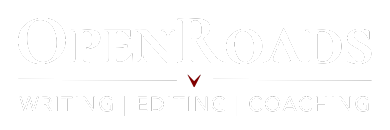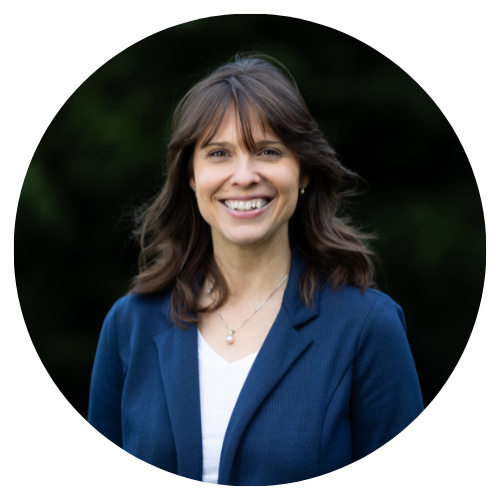I had a project I couldn’t ignore. The themes and aesthetics were fully formed in my mind, and for the first time, I knew exactly the book I wanted to write.
Around the same time, a friend offered to introduce me to her literary agent. The opportunity was exciting but came with its own pressure.
At the time, I’d completed only 15 percent of the manuscript. Not enough to feel good, taking advantage of that introduction. But it was just enough motivation to kick me into gear.
But I also knew I had “done my work.” My inner work.
I had the mindsets, habits, and skills necessary to make this happen—it felt within reach. What I needed was to make a promise to myself to do it—to write my book.
I set a timeline of one year. It was an ambitious deadline, but it gave me the structure and urgency to stay focused and keep moving forward.
Finding Balance and Staying Focused
As a coach, I often encourage others to begin by studying their craft, but I also knew from the start that research could easily become a distraction. It’s tempting to fall into endless reading, convincing yourself that you’re “preparing” when, really, it’s a way to avoid facing the blank page.
To prevent this, I set clear boundaries.
I divided my research into two focused areas: one on the Allegheny Mountains, which inspired the themes of my collection, and the other on prose poetry, the form in which I was working.
From there, I allocated five hours each week to reading and research, paired with another five hours dedicated to writing new poems.
Keeping these elements balanced ensured I progressed on both fronts without using one as an excuse to delay the other.
Breaking the overall goal into smaller steps was essential.
Knowing most poetry collections hover between 30 and 40 poems, I set a pace of two poems a month with a milestone of 20 completed works by month six.
To keep track of my progress, I created a folder system. Drafts went into one folder, finalized pieces into another.
Watching the “finalized” folder grow was satisfying! It reminded me that I was moving forward, even when the process seemed slow.
Momentum also came from sharing my work. Open mic nights became a regular part of my routine, where I committed to reading new poems each month. These performances weren’t solely about improving my work—they were about reconnecting to the heart of the project.
Standing before an audience reminded me why this collection mattered and fueled the energy I needed to continue.
Accountability also played a huge role. Twice a week, I lead cowriting sessions with other writers. These meetings provide focused time to show up, sit in my seat, and write. Sharing my goals with others and tracking my progress in a supportive environment helped me stay on track.
Knowing there was a community rooting for me made the process feel less solitary and more rewarding.
Overcoming Creative Challenges
Staying grounded in reading and research played a major role in keeping writer’s block at bay.
By remaining fully immersed in the themes and concepts of my project, I found that the ideas tended to flow naturally. The blank page, which can be a daunting obstacle for many, rarely felt like an issue. Each week’s dedicated hours for reading and research kept me engaged with the subject matter, ensuring that inspiration was never far away.
Identifying the core themes I wanted to explore also became a constant source of new ideas throughout the year. These themes—deep time, climate change, the intersection of climate change and socioeconomics, impermanence, and paleogeology—served as guideposts for my collection.
Whether I was contemplating the ancient geological history of the Southern Alleghenies or the fragile balance between human communities and shifting climates, I always had a thematic thread to pull on. These threads ensured that my work felt cohesive and kept me moving forward with intention.
The hardest challenge wasn’t starting new poems. It was trusting that each one would find its place within the collection. With a project centered around common themes like those above, I often questioned whether certain pieces connected meaningfully to the larger story I wanted to tell.
For example, I wondered if a poem about seasonal transitions could resonate alongside one exploring the erosion of mountain ridges. This required faith in the process and confidence in my ability to tie everything together as the collection grew.
I reminded myself that while the connections might not be obvious immediately, they often became clearer during revision
Rejections were another reality I dealt with.
As I began submitting individual poems for publication, the “no’s” rolled in. It was disheartening, but the positive feedback and connection I found through open mics helped balance out the sting. Performing my work live reminded me it wasn’t about instant validation—it was about growth and persistence.
Key Milestones and Breakthroughs
Reaching the six-month mark with 20 completed poems was a game-changer. That milestone was proof that my system worked and that I was capable of meeting my goal. It also reinforced my confidence in the project, fueling the momentum I needed to keep going.
Beyond that halfway point, smaller moments kept the journey fulfilling. The first time a poem truly “clicked,” the conversations sparked by sharing my work at open mics, and the camaraderie I found in cowriting sessions all added up.
These breakthroughs reminded me why I started and gave me the energy to continue.
Reflection and What Lies Ahead
Now, as I near the finish line with only a few poems left to write, I find myself reflecting on how far I’ve come—and how much my perspective has shifted.
When I first started this project, the idea of meeting an agent was a motivating factor. But as the manuscript has developed, that early external goal has taken a backseat. My focus now is on refining the collection and staying true to the vision behind it.
I’m particularly proud of the fat volume of printed poems I now have sitting beside me. That tangible stack makes me pause and say, “I wrote that. Really.”
It’s something I never felt during my MFA studies. Back then, accountability and prompts were provided for me, but I didn’t learn the self-leadership or mindset needed to see a manuscript through to completion. Nor did I learn how to view a project holistically and break it into manageable parts—skills that became essential over this past year.
This time, I have a clear vision of my publishing goals. I imagine this book being used in natural history college courses about northern Appalachia and published by an independent or indie press. Knowing my audience and purpose has kept me motivated throughout the process. The blank page felt approachable rather than daunting because I stayed focused on where this work might land.
As I move forward, I’m taking the next steps to elevate the manuscript: polishing the collection through a writing residency and manuscript consultation. These opportunities will allow me to strengthen the book and prepare it for submission to presses that align with its themes and vision.
What surprised me most is how much planning and structure eased the experience. With the right systems and mindset, the work unfolded effortlessly, giving me confidence that even ambitious creative projects can feel achievable with the right approach.
Final Thoughts for Aspiring Writers
Writing a book in one year might feel like an overwhelming goal, but it can become surprisingly manageable when you focus on building the right framework.
What I’ve learned is that intentionality makes all the difference. Knowing my audience, defining my themes, and aligning my work with a clear vision gave me the tools to move forward steadily and confidently. By letting the systems and structures I created do the heavy lifting, I could focus on sitting in my seat to write and trusting the process.
Looking back now, I see how this journey wasn’t just about producing a collection of poems. It was about learning how deliberate planning and self-leadership can turn an ambitious dream into something tangible. This wasn’t hard work—it was focused work.



